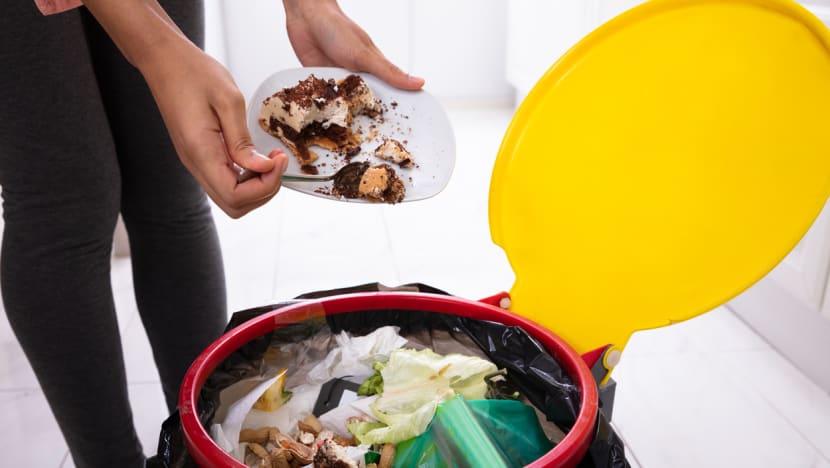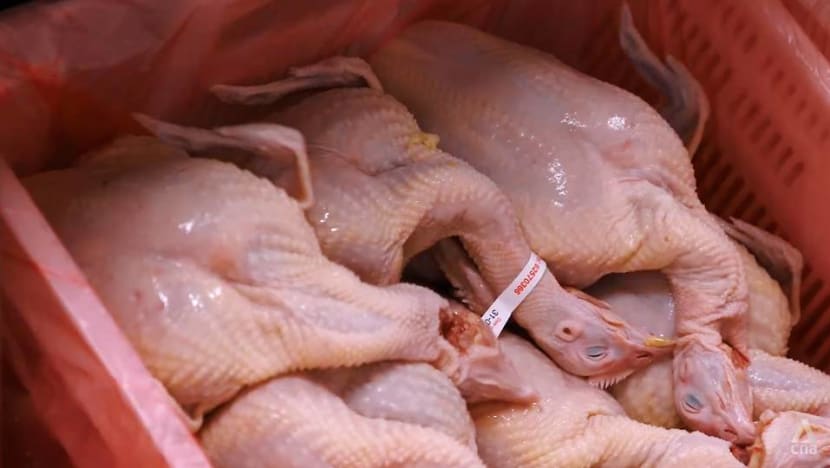Commentary: Singapore’s festive indulgence creates enormous food waste
Even as Singapore makes progress in the fight against food waste, the holiday season remains a hard nut to crack — but it need not be so, says Seeram Ramakrishna.

Throwing away food after a big holiday meal? Maybe order less in the future. (Photo: iStock)
SINGAPORE: ‘Tis the season of feasting.
And although eco-friendly food habits, like eating less meat and avoiding food waste, have become more mainstream in recent years, we must ask ourselves the uncomfortable question as we attend holiday gatherings and stock up our kitchens: Do our efforts to reduce food waste go out of the window during the holidays?
Statistics from the United Kingdom show that a disproportionate proportion of food waste is generated during the Christmas season, with household food waste levels rising 30 per cent.
In Australia, a Melbourne University study found that food waste rises in December and January as people eat out, with 40 per cent of food purchased as festive season stock ending up in the bin.
In the United States, household waste increases by 25 per cent during the period between Thanksgiving and the new year.
As for Singapore, the nation generated 665,000 tonnes of food waste last year, equivalent to the weight of about 46,000 double-decker buses — even as a National Environment Agency (NEA) survey in 2019 found that more consumers are adopting environmentally conscious food habits such as having no leftovers on their plates when eating out.
HOLIDAY INDULGENCE FUELLING FOOD WASTE
One reason for the festive waste spike is that the holiday season is associated with indulgence. People are less careful about their food habits.
There are more parties and buffets. Consumers might be tempted by deals at eateries and supermarkets to buy more than they need.
About a quarter of Singapore households often throw away spoiled or expired food, mostly because they bought too much or it was hidden at the back of the fridge, another NEA study found.
Then there is the Asian mindset that excess food should be prepared to prevent the embarrassment of guests and family members going hungry. The 2019 NEA survey found that 40 per cent of respondents over-catered for gatherings, with carbohydrates like rice and noodles commonly getting binned.
It is also possible Singaporeans simply underestimate how much they toss. Most respondents in a Milieu Insight poll in October last year said their households threw away only small or “reasonable” amounts of food.
Consumers are not the only contributors, however, to the problem. About 40 per cent of Singapore’s food waste comes from the commercial and industrial sectors.

Food waste is one of the priority waste streams in Singapore’s Zero Waste Masterplan, which aims to slash waste going to Semakau Landfill by 30 per cent by 2030 to prevent the landfill from running out of space by 2035.
And with the holiday season being one of the biggest culprits in the food waste problem, it is a good place to start.
REDUCING AND RECYCLING FOOD
Efforts in other nations to counter festive food waste can have lessons for us.
China, which sees large amounts of food waste during its festive season, rolled out a Clean Plate campaign against food waste last year, with the Wuhan Catering Association suggesting diners order one dish less than the number of people gathering.
Australian consumers this year are snapping up festive gift boxes of imperfect but fresh fruit and vegetables from social enterprise Good and Fugly, which come with a cooking demo designed to reduce food waste.
In Thailand, consumers have snapped up over 20,000 boxes of discounted, unsold food items from eateries, hotels and supermarkets on food waste start-up app Yindii.
In South Korea, meanwhile, 95 per cent of food waste is recycled — into fertiliser and animal feed, for example — thanks to a system requiring households to bag food waste separately and pay fees according to the weight of the waste.
This is valorisation at work — the act of making something useful from an existing substance, which in this case is the conversion of food waste into new products.
This approach can speed up our progress in food waste reduction and close Singapore’s waste loop, beyond typical calls for consumers to order just enough, make use of leftovers or donate surplus food.
Some Singapore companies are making strides in this area. Crust Group is partnering restaurants and food retail outlets to turn their surplus products into beer and sparkling water.
Asia Pacific Breweries transforms spent barley grains from the beer-brewing process into ingredients for animal feed.
Insectta breeds black soldier flies to make biomaterial, with the larvae converting food waste into natural fertiliser, while TRIA uses a rapid digestion technology to convert food waste and disposable foodware into fertiliser.
How do staggering 11.11 sales figures sit with a growing consciousness about waste and sustainability? We ask a marketing professor and Lazada's Chief Business Officer on Heart of the Matter:
IS A CIRCULAR ECONOMY THE ANSWER?
Singapore is keenly examining the circular economy as a solution to its food waste problem.
From 2024, large food-waste generators in the commercial and industrial sectors will be required to segregate and treat their food waste. This opens up more options for waste treatment, including valorisation.
While the circular economy can slash food waste, it requires a joint effort, such as partnerships between stakeholders and collaborations between business and research experts to develop more food valorisation capabilities.
The NEA has set up an Industry Steering Committee focused on creating a circular economy for food. It is looking to encourage more firms to adopt valorisation solutions to upcycle food waste.
Tackling food waste is also a key topic that industry captains, innovators and policymakers will discuss at the biennial CleanEnviro Summit Singapore in April.
Our food waste recycling progress has been promising, jumping from 10 per cent in 2011 to 19 per cent last year. Singapore recycled 126,000 tonnes of food waste last year, close to double the 70,000 tonnes a decade ago.
Still, this means the bulk of food waste goes to the waste-to-energy plants.
Going back to the festive waste problem, it appears that it will take more time for consumer mindsets and food habits to shift towards mindfulness of food waste during the holidays.
Luckily, while we move towards that goal, technological advancements are simultaneously making it easier to recycle our food waste. Yet it cannot replace the importance of stopping food waste from being generated at one main source: Us.
So, while we shop at the supermarket or order meals for our gatherings, let us think harder about preventing food waste. That is even better than finding a solution for it.
Seeram Ramakrishna is Professor and Circular Economy Taskforce Chair at the National University of Singapore; and ESG Committee Member of the Singapore Institute of Directors. He was a speaker at the CleanEnviro Summit Singapore Catalyst 2021, which discussed the topic of Enhancing Sustainable Development in a Pandemic World.
























